#494 A Flyby View of Ganymede October 25, 1996
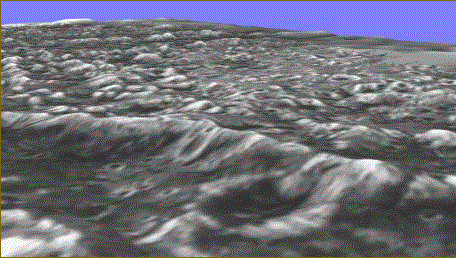
“This is what it would look like to fly over the surface of Jupiter's moon Ganymede. NASA's robot spacecraft Galileo recently approached only 6000 miles from this frozen ice-ball of a moon. The above image is a digital reconstruction from two images taken during this flyby. The blue color of the sky is artificial. Deep furrows cover Ganymede's surface, and several impact craters are also present. Galileo continues to orbit Jupiter and send back breathtaking photos of Ganymede, Io, Europa, Callisto, and, of course, Jupiter itself. "
Copyright: Public domain
#495 Mir Over New Zealand
Credit: October 26, 1996
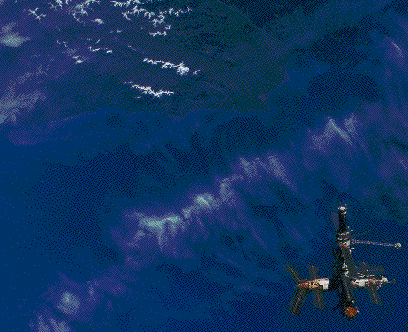
“The Russian space station Mir was photographed last month high above New Zealand. Before returning with record-breaking astronaut Shannon Lucid, the space shuttle Atlantis crew took this breathtaking view from the Space Shuttle Atlantis. Atlantis had just undocked from Mir and was preparing to return to Earth. "
Copyright: Public domain
#496 Io's Active Volcanoes
Credit: October 27, 1996
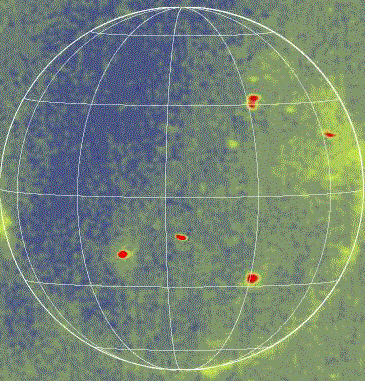
“Why is Io green at night? In this just-released nighttime picture of Jupiter's moon Io, the red spots clearly show Io's current volcanically active regions. But what is causing the global green sheen? This telling picture was taken by the automated Galileo spacecraft currently orbiting Jupiter while Io was in Jupiter's shadow. One hypothesis is that the green glow is caused by a different type of aurora resulting from high-energy particles interacting with Io's volcanic plumes. "
Copyright: Public domain
#497 The Weather on Neptune
Credit: October 28, 1996
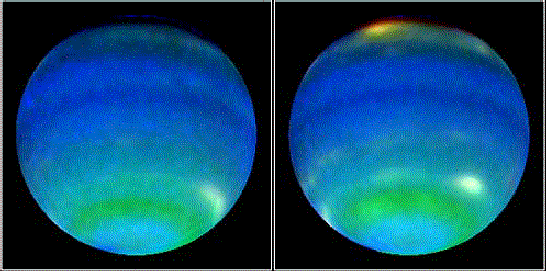
“Today's weather on Neptune will be typical. Highs in the upper atmosphere will be about -150 Centigrade, with winds ranging about 900 miles per hour near the equator. Much was learned recently about Neptune's weather by the release last week of time-lapse pictures of the most distant gas giant in our Solar System. These pictures show how the weather differs between the two hemispheres of Neptune. The overall blue color of Neptune is caused by methane gas preferentially absorbing red light, while the yellow spots are the highest clouds. It is still not known why Neptune's Great Dark Spot disappeared. "
Copyright: Public domain
#498 Io Full Face
Credit: October 29, 1996
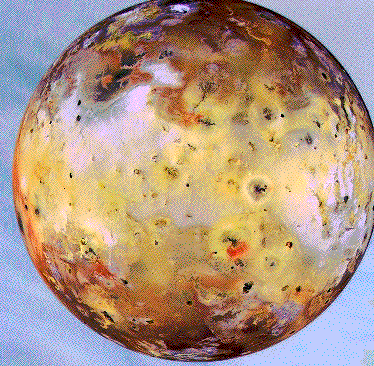
“Io is a colorful place. The closest large moon of Jupiter, Io is the most volcanic moon in the Solar System with its surface being completely buried in volcanic lava every few thousand years. The black and red material corresponds to the most recent volcanic eruptions and is probably no more than a few years old. This image by the automated spacecraft Galileo highlights the side of Io that always faces away from Jupiter. In this image released last week, picture colors have been adjusted to enhance contrast, but are based on real composite infrared, green and violet-light images. "
Copyright: Public domain
#499 Grand Design Spiral Galaxy NGC 2997 October 30, 1996
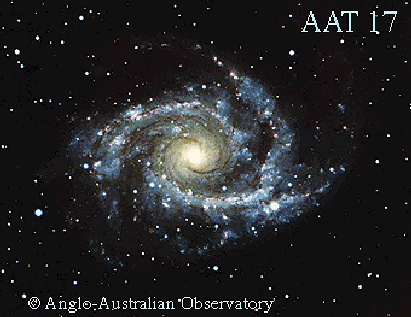
“NGC 2997 is a grand design spiral galaxy. Its small nucleus and sprawling spiral arms give it a type "Sc" designation. NGC 2997 is speeding away from us at about 1100 kilometers per second, which would place it at about 55 million light years distant, given current estimates of the expansion rate of our universe. NGC 2997 is thought to have a mass of about 100 billion times that of our Sun, but is probably less massive than our own Milky Way Galaxy. NGC 2997 is not seen face-on - it is thought tilted by about 45 degrees. NGC 2997 is particularly notable for a nucleus surrounded by a chain of hot giant clouds of ionized hydrogen. "
Copyright: Anglo-Australian Telescope Board
#500 The Barren Moon
Credit: October 31, 1996
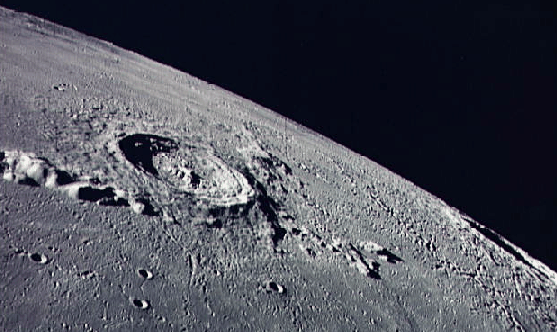
“The above photo, taken as the Apollo 17 astronauts orbited the Moon in 1972, depicts the stark lunar surface around the Eratosthenes and Copernicus craters. Many similar images of a Moon devoid of life are familiar to denizens of the space age. Contrary to this modern perception, life on the Moon was reported in August of 1835 in a series of sensational stories first published by the New York Sun - apparently intended to improve the paper's circulation. These descriptions of lunar life received broad credence and became one of the most spectacular hoaxes in history. Supposedly based on telescopic observations, the stories featured full, lavish accounts of a Moon with oceans and beaches, teeming with plant and animal life and climaxing with the report of sightings of groups of winged, furry, human-like creatures resembling bats! Within a month the hoax had been revealed but the newspaper continued to enjoy an increased readership. Though barren, the Moon remains a popular setting for science fiction stories and extra-terrestrial adventures."
Copyright: Public domain
#501 Spiral Galaxy NGC 3628 Edge On
Credit: November 01, 1996
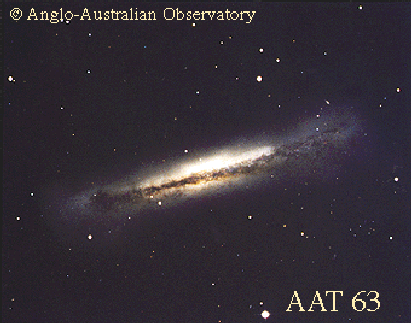
“This is what a spiral galaxy looks like sideways. This view of NGC 3628 nearly resembles our own Milky Way Galaxy, which is also known to be a spiral. The dark band across the center is absorbed starlight caused by the galaxy's own interstellar dust. NGC 3628 is the faintest member of the Leo Triplet, a group of galaxies dominated by M65 and M66. The Leo Triplet lies about 35 million light years distant. The center of NGC 3628 emits variable X-ray radiation perhaps indicating the presence of a massive black hole. "
Copyright: Anglo-Australian Telescope Board
#502 Spiral Galaxy NGC 253 Almost Sideways
Credit: November 02, 1996
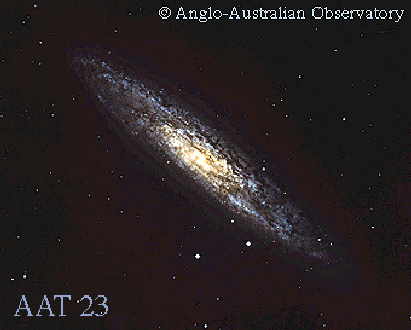
“NGC 253 is a normal spiral galaxy seen here almost sideways. It is the largest member of the Sculptor Group of Galaxies, the nearest group to our own Local Group of Galaxies. NGC 253 appears visually as one of the brightest spirals on the sky, and is easily visible in southern hemisphere with a good pair of binoculars. The type "Sc" galaxy is about 10 million light years distant. NGC 253 is considered a "starburst" galaxy because of high star formation rates and dense dust clouds in its nucleus. The energetic nuclear region is seen to glow in X-ray and gamma-ray light. "
Copyright: Anglo-Australian Telescope Board
#503 Surveyor Night Launch
Credit: November 03, 1996
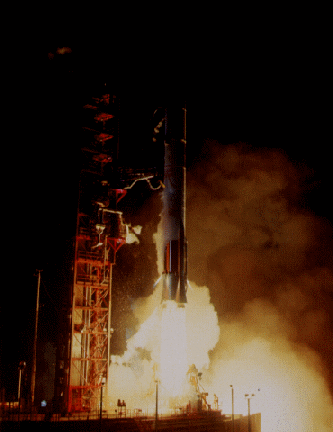
“In early November of 1967, a dramatic night launch of an Atlas Centaur rocket from Cape Canaveral lofted the successful Surveyor 6 spacecraft toward the Moon. The Surveyor series of robotic probes carried out the first US lunar soft landings in preparation for the Apollo program. Still in use today, Atlas Centaur rockets launched many lunar and planetary probes in the 60s and 70s."
Copyright: Public domain
Upvote! Resteem! Comment! As you like it! Thank you for attention!
So we reached a 500!!!!
Downvoting a post can decrease pending rewards and make it less visible. Common reasons:
Submit
Hi @george-zagraid,
Your blog is really nice!
Thanks :)
Downvoting a post can decrease pending rewards and make it less visible. Common reasons:
Submit
Thanks for a good word)
Downvoting a post can decrease pending rewards and make it less visible. Common reasons:
Submit